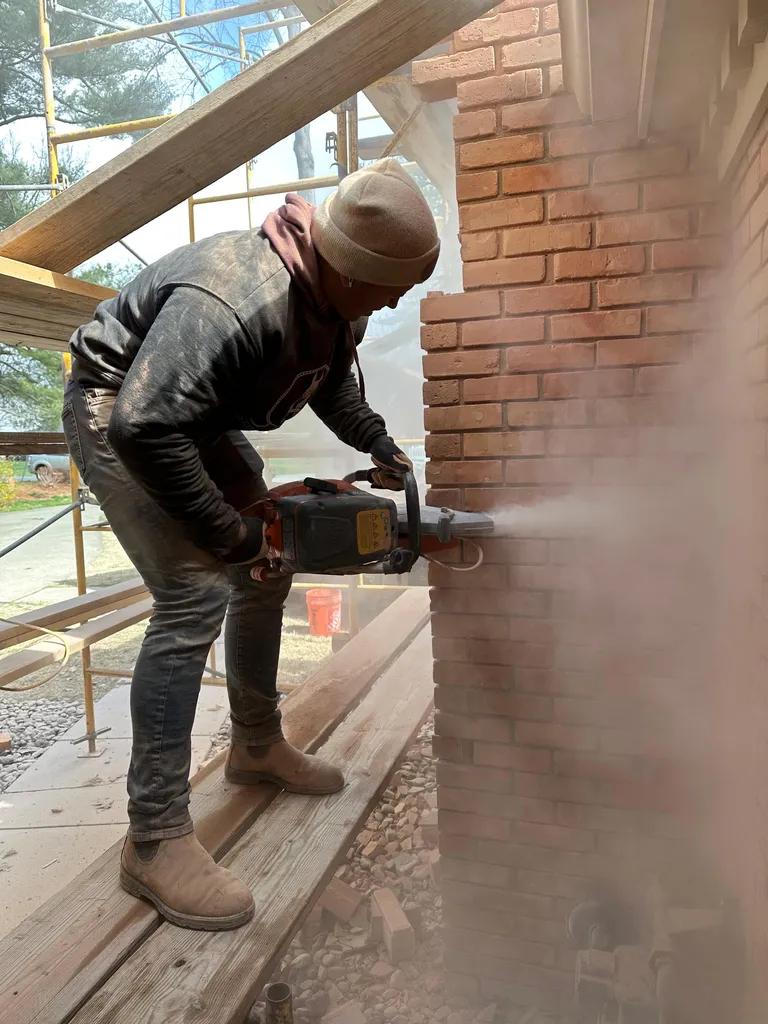Fireplaces are not only functional sources of warmth and comfort, but they can also serve as stunning focal points within a home. Victorian fireplaces, in particular, are renowned for their elaborate designs and intricate detailing. Restoring these historical features requires a delicate touch and a keen eye for preserving their original beauty. In this professional guide, we will explore the process of restoring Victorian fireplaces to their former glory, ensuring that they remain a timeless centerpiece in any household.
Table of Contents
- Restoring Victorian Fireplaces: Understanding the Historical Significance
- Assessing the Condition: Tips for Identifying Damage and Wear
- Professional Techniques for Cleaning and Restoring Victorian Fireplaces
- Choosing the Right Materials and Tools for Restoration Success
- Q&A
- Future Outlook

Restoring Victorian Fireplaces: Understanding the Historical Significance
When it comes to restoring Victorian fireplaces, it is important to understand the historical significance behind these intricate pieces. Victorian fireplaces were not only functional heating sources, but they were also decorative focal points in homes during the 19th century. Restoring these fireplaces requires careful attention to detail to ensure that their historical charm is preserved.
One of the key elements to consider when restoring Victorian fireplaces is the materials used. Many Victorian fireplaces were made from cast iron, marble, or tile, each of which requires specific cleaning and restoration techniques. It is important to consult with a professional fireplace restorer who has experience working with Victorian pieces to ensure that the restoration process is done correctly. Additionally, understanding the architectural style of the Victorian era can help guide the restoration process, ensuring that the fireplace fits seamlessly into the overall design of the space.

Assessing the Condition: Tips for Identifying Damage and Wear
When restoring Victorian fireplaces, it is crucial to assess the condition of the piece before beginning any restoration work. Identifying damage and wear is essential to ensure that the fireplace can be restored to its former glory. Here are some tips to help you assess the condition of a Victorian fireplace:
- Check for cracks or chips: Inspect the fireplace for any cracks or chips in the tiles or cast iron. These can be signs of damage that will need to be addressed during the restoration process.
- Look for signs of rust: Rust can be a common issue with Victorian fireplaces, especially in the cast iron components. Check for any areas of rust and determine if it can be removed or if the piece will need to be repainted.
- Assess the overall stability: Make sure the fireplace is stable and secure. Any wobbling or movement could indicate structural issues that will need to be repaired.
| Damage Type | Action Needed |
|---|---|
| Cracks in tiles | Repair or replace damaged tiles |
| Rust on cast iron | Remove rust and repaint as needed |
| Structural instability | Reinforce or repair unstable areas |
By carefully assessing the condition of a Victorian fireplace, you can ensure that the restoration process is successful and that the final result is a beautiful and functional piece that will add character to any home. Remember to consult with a professional if you are unsure about how to address any damage or wear that you may find during the assessment.

Professional Techniques for Cleaning and Restoring Victorian Fireplaces
When it comes to cleaning and restoring Victorian fireplaces, it is important to use professional techniques to ensure the job is done correctly. One of the first steps in the process is to carefully remove any dust, dirt, or debris from the fireplace. This can be done using a vacuum cleaner with a brush attachment or a soft brush to gently sweep away any loose particles. Next, it is important to clean the fireplace surround and hearth using a mild detergent or stone cleaner to remove any built-up grime.
Once the fireplace is clean, it may be necessary to repair any damaged or missing pieces. This can include replacing broken tiles, repairing cracks in the hearth, or repainting any chipped or faded areas. Additionally, it is important to regularly maintain the fireplace by dusting and polishing it to keep it looking its best. By following these professional techniques, you can ensure that your Victorian fireplace remains a beautiful focal point in your home for years to come.

Choosing the Right Materials and Tools for Restoration Success
When it comes to restoring Victorian fireplaces, selecting the right materials and tools is crucial for achieving a successful outcome. To ensure that your restoration project is done with precision and care, it is important to choose high-quality materials that are authentic to the era. Look for suppliers that specialize in Victorian fireplace components and accessories to ensure authenticity in your restoration.
Additionally, having the right tools for the job is essential for a seamless restoration process. Invest in quality tools such as a chisel set, mallet, wire brush, and fireplace mortar to ensure that every detail is attended to with precision. Proper tools will not only make the restoration process easier but also help in achieving professional results that will stand the test of time.
Q&A
Q: What is the importance of restoring Victorian fireplaces?
A: Restoring Victorian fireplaces is crucial for maintaining the historical integrity and aesthetic value of a period home. It also helps improve the functionality and efficiency of the fireplace.
Q: What are the common issues that arise with Victorian fireplaces?
A: Common issues with Victorian fireplaces include cracks in the tiles or surround, missing or damaged parts, inefficient heating, and general wear and tear.
Q: How can one go about restoring a Victorian fireplace?
A: It is recommended to hire a professional fireplace restoration specialist who has experience working with Victorian fireplaces. They will be able to assess the condition of the fireplace, source replacement parts, and expertly restore the fireplace to its former glory.
Q: Are there any specific materials or techniques used in restoring Victorian fireplaces?
A: Yes, restoring Victorian fireplaces requires a deep understanding of the period’s design styles and materials. Traditional methods and materials may be used in the restoration process, such as matching tiles, cast iron parts, and bespoke craftsmanship.
Q: How can homeowners maintain their restored Victorian fireplaces?
A: Regular cleaning and maintenance are essential for keeping a restored Victorian fireplace looking its best. Avoid using harsh chemicals or abrasive materials on the tiles and surround, and have the fireplace inspected by a professional regularly to check for any signs of wear or damage.
Future Outlook
In conclusion, restoring Victorian fireplaces requires a delicate balance of historical preservation and modern techniques. By following the steps outlined in this professional guide, you can bring new life to these exquisite architectural features while maintaining their authentic charm. Whether you are a homeowner looking to restore a fireplace in your period property or a professional in the field, the process outlined in this guide will help you achieve stunning results. Remember, proper restoration not only enhances the visual appeal of your fireplace but also adds value to your home. With careful planning and attention to detail, you can ensure that your Victorian fireplace remains a timeless centerpiece in your space for years to come.


